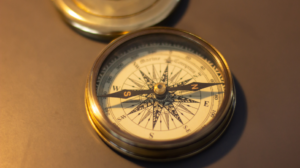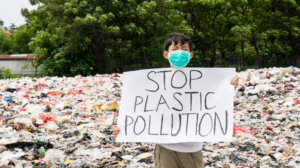4 Things You Can Do for Plastic Free July
Now that it is summer, millions of people are gearing up to participate in Plastic Free July. This annual month-long challenge was created in 2011 in Australia and has since grown enormously; it’s now considered one of the most influential environmental campaigns in the world, with 250 million participants expected this year.
The appeal of Plastic Free July is that it shrinks a daunting task – cutting plastic out of one’s life – into a single month, making it more accessible and achievable than if it were open-ended. There’s a sense of community, knowing that so many others are doing the same, and with that comes accountability.
If your regular grocers or bulk food stores have changed their policies due to COVID-19 and have yet to switch back, there are still things you can do to reduce plastic usage this July.
Australian zero waste expert Lindsay Miles offers some sage advice. Even though the global plastic problem isn’t dominating the news right now, it has not gone away and every little action helps.
“No one is asking you to risk your health, start an argument at the store or fight the local barista to be allowed to use your reusables. Truth be told, there are plenty of ways we can reduce our plastic use that aren’t single-use coffee cups and shopping bags. Plastic Free July is so much more than a buy-all-the-shiny-reusables challenge. It’s about looking at our habits and exploring new ways of doing things.”
So what CAN you do to participate in Plastic Free July, assuming that the usual path of reusables is out? Here are some ideas, combined with links to other Treehugger articles that can give you even more information and inspiration.
1. Start with one thing.
It can be daunting to change everything at once, so instead choose one or two things to make plastic-free. Commit to not using cling wrap, Ziploc bags, plastic shopping bags, takeout coffee cups, plastic water bottles, disposable makeup wipes, plastic food pouches for your kids, or straws. If it goes well, maybe you’ll want to expand and add additional items each month after the July challenge has ended. By the time a year has passed, much of your lifestyle will have been transformed.
2. Make stuff from scratch.
A big part of going plastic-free is figuring out how to make homemade replacements for things you’d normally buy in packaging. You don’t need to go crazy; even Bea Johnson, founder of the zero waste movement, has spoken out against how some Instagram influencers have taken their DIYing to an absurd level and actually harm the movement by making it seem unattainable.
But there is a certain element of DIY that you need to embrace in order to avoid packaging. Perhaps, during this Plastic Free July, you can try making your own bread or tortillas, yogurt, sauerkraut, ice cream, or condiments like pesto, salsa, ketchup, even hot sauce. It’s a great time of year (in the northern hemisphere, at least) to can your own foods; buy or pick a load of seasonal fruit and turn it into jam. You don’t need to become an expert at everything. Just choose one recipe and master it so that it becomes easy.
3. Splurge on plastic-free products.
Shopping isn’t typically a solution to environmental problems, but a few smart purchases can reduce plastic packaging in the long run. Do some research during Plastic Free July to learn about products you’d like to acquire and start saving for them. Start with a reusable menstrual cup or washable pads, a great travel mug, water bottle, cotton drawstring produce bags, stainless steel food storage containers, shampoo and soap bars, natural deodorant in a glass jar, reusable straws, and more.
4. Think about your clothes.
Synthetic clothes are a major source of plastic pollution in the form of tiny microfibers that are released during laundering. Too tiny to be filtered out, these end up in waterways, animals’ bellies, and drinking water supplies. While clothes don’t get as much attention during plastic-free campaigns as grocery shopping and food do, they should. It’s important to buy natural fibers whenever possible, in order to avoid this form of pollution.
Whatever you do, don’t let perfectionism get in the way of progress. Nobody knows what they’re doing when they start out, and you’ll learn as you go. The hardest part is to begin the process of weeding out plastics, but it quickly becomes fun, even addictive.



